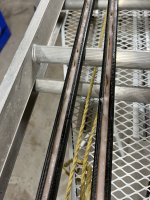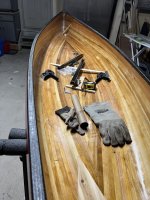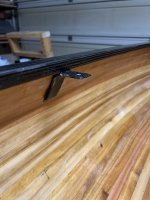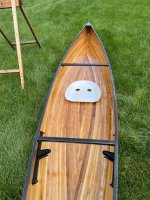I’ve had good results using a cedar “uniwale” as stripperguy described, but with 8 oz carbon fiber sleeve. Probably not as light as a foam core, but still came out to around 3 pounds all-in for 3/4 x 7/8 gunwales on a 14 foot pack canoe. And the wood is totally encased in carbon and epoxy so no worry about mushrooms, and no need for vacuum bagging.
Make the wood gunwale and dry fit until you are happy with it. Then round the corners etc. so you don’t snag the carbon, run it through the sleeve and liberally brush on epoxy. A gloved hand works great to squeegee it nice and tight, and get rid of excess.
Once it is dry to the touch, cut out the carbon that covers the slot in the gunwale with a box knife, and you will find that it is still flexible enough to follow the sheer line and attach with thickened epoxy. Finish up with additional epoxy to fill the weave, along with varnish for uv protection.
View attachment 137048
View attachment 137049
View attachment 137051





